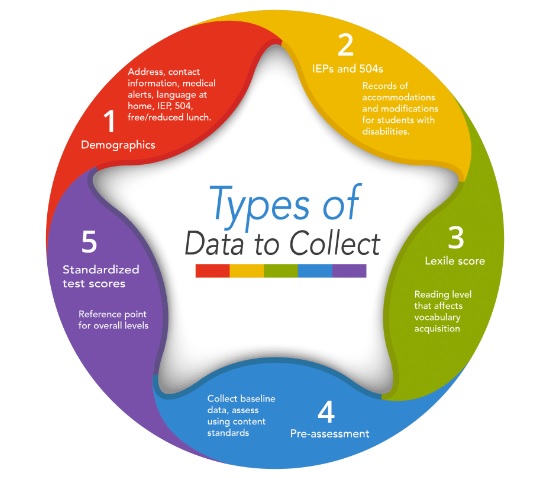Involve Elementary Students In Data Collection: Here's How!
27th February 2024

When the school year first starts, it might seem like you are always testing the students. You aim to keep an eye on your youngest students' development in areas like phonological awareness, letter names, letter sounds, sight words, blending, etc. It might be daunting to attempt to handle all of this data collecting. However, consider how student participation in data reviews and goal-setting might alter process monitoring. By adopting a new perspective, data collecting can have an effect that goes well beyond merely tracking academic achievement. Here is how you can help students learn about data collection.
Practical Tips To Involve Students In The Process Of Data Collection

Here are a few ways by which you can instill the process and values of data collection in your students:
- Initiate Discussion Of Metacognition And Growth Mindset
There are several growth mindset texts that you can use in a classroom to help your students. You can choose any text from the read-aloud version available on the internet and make data collection fun and engaging in a classroom. After discussing the characters you can then share all things they have learned.
These texts are perfect to grow as an individual and identify all of the strengths and the areas that need to be worked upon to get better. A natural topic on how to recognize talents you're not yet proficient in was spurred by the read-aloud talks. This can make it easy to introduce the topic of assessments' purpose to the students.
- Engage Students In The Data Collection Process
Start by giving your students an idea about what is the exact skill you are testing, how it would be measured, and the implications of the findings. To make the experience less frightening for kids and more educational for you, speak about the rationale behind progress tracking. Make your students learn about the concept of data to reduce some of the tension or anxiety associated with testing.
Employ graphs as a student-facing assessment tracker to engage them in the data review process. As a consequence, students would be better able to comprehend the skill they were aiming for and could see the outcomes of their evaluation. This similar method may be used for reading comprehension, fluency, and phonological awareness by simply changing the graph or picture to match the data that was gathered.
Hey, do you follow us on Social Media? We regularly share upgraded educational content, tips, feedback and more. Check us out by clicking the profiles here - Facebook / Twitter / LinkedIn / Pinterest / Instagram / YouTube
- Set Personalised Child-Centered Goals
Following the creation of the data's visual representation, divide your students into small groups and work with them to establish SMART objectives. Give them the freedom to evaluate their findings and select one objective that they want to follow up on.
To avoid overwhelming these young learners, even if you may have numerous goals for them, it is beneficial to start with monitoring one goal in a student-facing manner. You may provide your students with a bank of goal alternatives or create group objectives based on the data if they require a scaffold.
- Make Data Visible In Child-Centered Ways
Once students have established their goals, you should maintain their motivation. You can have data sessions with them in the same way that instructors do. Plan your reassessment dates and how you will assign students to monitor their progress.
If they were one-on-one sessions, they would only last a few minutes or perhaps fifteen minutes in small groups. You can either talk about their progress at these data sessions or finish a reassessment to add fresh data to their tracker.
- Celebrate Success
Celebrating accomplishments is the most crucial aspect of goal-setting and data monitoring. You can postcards home with students whenever they achieve a goal as one way to celebrate. As students waited for the sent postcards to arrive at their homes, this was a fun opportunity to extend the celebration and foster home-school contact.
Along with this, you can ask your students to present their accomplishments in the autumn and spring conferences. They can talk about their goals and explain any graphs or work samples they had created to demonstrate how they were progressing toward them during student-led conferences. Through this insightful data presentation, students were able to acquire the vocabulary necessary to talk about their achievements and long-term objectives.
Make Data Learning Fun
Transform dull data leaning into advocacy opportunities. Try framing assessments as a chance to encourage natural conversations about feedback with students, rather than just seeing them as a list of tests you have to do. Try equipping yourself with a Diploma in Early Years Care and Education to encourage self-reflection, self-monitoring, and perseverance. With these, you can transform your current process of data collection and make students advocates for their educational journey.
We believe education should be accessible for everyone. That’s why we don’t charge for our blogs. Find the right course that will help you in your career with us, contact us at - 1800–212–6400. You can mail us at act@asiancollegeofteachers.com
Written By: Bindita Sinha